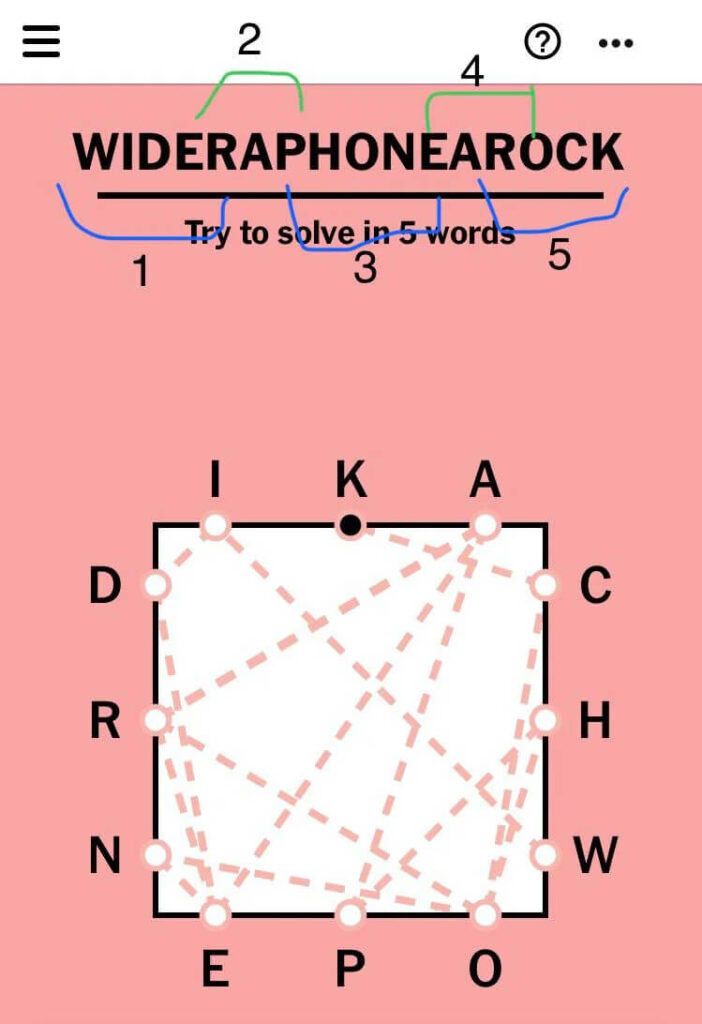Letter Boxed is a popular word puzzle game created by The New York Times. The objective is to form words using letters arranged in a square, with the constraint that consecutive letters must come from different sides of the box. The challenge is to use all the letters in as few words as possible.
For puzzle enthusiasts, solving Letter Boxed efficiently requires strategy, vocabulary, and sometimes a little help from tools like a Letter Boxed solver. In this article, we’ll explore:
- How Letter Boxed Works
- Strategies for Solving Letter Boxed Manually
- What Is a Letter Boxed Solver?
- How Letter Boxed Solvers Work
- Best Letter Boxed Solver Tools Available
- Ethical Considerations: Should You Use a Solver?
- Tips to Improve Your Letter Boxed Skills Without a Solver
1. How Letter Boxed Works
The Letter Boxed puzzle consists of a square divided into four sides, each containing three letters (for a total of 12 unique letters). The rules are simple:
- Form words by connecting letters.
- Consecutive letters must come from different sides.
- The last letter of a word becomes the first letter of the next word.
- The goal is to use all letters in the fewest words possible.
Example Puzzle:
A B C
D E F
G H I
J K L Possible Solution:
- “ADG” (A → D → G)
- “GJK” (G → J → K)
- “KLE” (K → L → E)
- “EFI” (E → F → I)
- “ICB” (I → C → B)
This solution uses 5 words to cover all letters. An optimal solver would find a solution in fewer words.
2. Strategies for Solving Letter Boxed Manually
Before relying on a solver, try these strategies:
a. Identify Key Linking Letters
- Look for letters that can connect multiple sides.
- Vowels (A, E, I, O, U) are often useful for transitions.
b. Start with Longer Words
- Longer words reduce the number needed to cover all letters.
- Example: “ADGJ” is better than two separate 2-letter words.
c. Plan Word Sequences
- Think ahead: The last letter of each word must start the next.
- Example: “FED” → “DAB” → “BIG” (if letters are available).
d. Use All Letters Efficiently
- Track which letters remain unused.
- Prioritize words that include rare letters.
3. What Is a Letter Boxed Solver?
A Letter Boxed solver is a digital tool that generates optimal solutions for the puzzle. It uses algorithms to find the shortest sequence of valid words that cover all letters.
Why Use a Solver?
- Saves time when stuck.
- Improves learning by revealing efficient word combinations.
- Helps train pattern recognition for future puzzles.
4. How Letter Boxed Solvers Work
Most solvers follow these steps:
- Input Letters: The user enters the 12 letters arranged by side.
- Dictionary Check: The solver references a word list (e.g., English dictionary).
- Graph Traversal: Models letters as nodes, connecting valid transitions.
- Pathfinding Algorithm: Uses techniques like DFS (Depth-First Search) or BFS (Breadth-First Search) to find minimal word sequences.
- Output Solutions: Ranks solutions by word count and length.
Example Algorithm:
- Step 1: Build a graph where edges represent valid letter transitions.
- Step 2: Start from each letter, exploring possible words.
- Step 3: Combine words until all letters are used.
- Step 4: Return the shortest valid sequence.
5. Best Letter Boxed Solver Tools
Here are some reliable solvers:
a. NYT Letter Boxed Solver (Unofficial)

- Link: https://letterboxed.aliceyliang.com/
- Features: Fast, user-friendly, provides multiple solutions.
b. Solver’s Letter Boxed Tool
- Link: https://letter-boxed-solver.netlify.app/
- Features: Supports custom dictionaries, step-by-step solving.
c. GitHub Open-Source Solvers
- Developers have created Python-based solvers (search “Letter Boxed solver GitHub”).
6. Ethical Considerations: Should You Use a Solver?
Pros:
- Helps learn new words and strategies.
- Useful for practice and improving speed.
Cons:
- May reduce the challenge if overused.
- Against NYT’s spirit of independent solving.
Recommendation: Use solvers sparingly—only after attempting manually.
7. Tips to Improve Without a Solver
- Expand Vocabulary: Learn uncommon words.
- Practice Daily: Regular solving improves intuition.
- Study Past Solutions: Analyze NYT’s published answers.
- Use Pen & Paper: Visualizing helps spot connections.
Conclusion
A Letter Boxed solver can be a powerful tool for enthusiasts, but the real joy comes from mastering the puzzle through practice. Whether you use a solver for hints or tackle it alone, the key is to enjoy the linguistic challenge.
Final Tip: Try today’s NYT Letter Boxed puzzle—apply these strategies and see how you do!
Would you like a step-by-step walkthrough of solving a specific Letter Boxed puzzle? Let me know in the comments!
